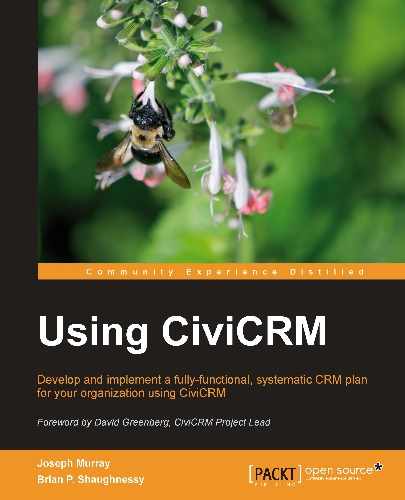We've spent the last 11 chapters exploring the many ways we can capture and store information about constituents, work with contact records, perform bulk actions on records, create forms and expose data on our site, and build multi-dimensional depth in our organization's data.
With this increasing breadth of information, our next goal is to retrieve and display our data through reports. In this chapter, we will:
- Discuss the purpose, terminology, and basic concepts of CiviCRM reports
- Review the tools available for generating and publishing reports
- Put these tools in context within your organization
What is a report?
Ok, that may seem like a trite question. However, we ask it with sincerity: What is a report? When the Executive Director, Membership Committee Chair, Fundraising consultant, Board Secretary, or staff supervisor in the next cubicle asks you for a report, what are they expecting to receive? What makes a report different from a set of records exported from search results?
Reports present data with a message. More than raw data and more than just a subset of records, reports are meant to tell a story. We can begin to understand their purpose by comparing them to search results. They are similar, but differ in several important ways:
- Reports are more specialized in the types of data that can be filtered and the way in which that data is rendered.
- Reports are intended for more visual uses, whereas a search result yields a simple list of data which can be exported or acted upon in other ways. A report may present results with a header, footer, and more visually appealing layout which can be printed, published to PDF, e-mailed, or otherwise distributed.
- Reports may group data and display summary calculations (sums, counts, and so on) or graphical representations of the results (such as pie and bar charts).
- Occasionally, reports are more like data to be acted upon, such as a walk list of contacts or a report for the bookkeeper listing every online transaction within a period.
These practical differences help us better understand and distinguish reports from a raw set of data. However, what drives a report ultimately is its goal to transfer knowledge and communicate a message.
In this sense, a report is all about the bottom line. When we build a report, we want to see the change over time, depth of constituent involvement, breadth of impact with various campaigns, and other metrics that tell us how well we are serving our constituents, reaching our audience, building a network, and generating support.
As we begin looking at specific tools, don't lose sight of the forest through the trees. The tools are a means to an end; they are meant to help you communicate your message to stakeholders (members, donors, and active participants), and decision makers (board of directors, management, and committees). However, the heart of what you're communicating is the message, and not the PDF file or hardcopy document which we call a "report".
